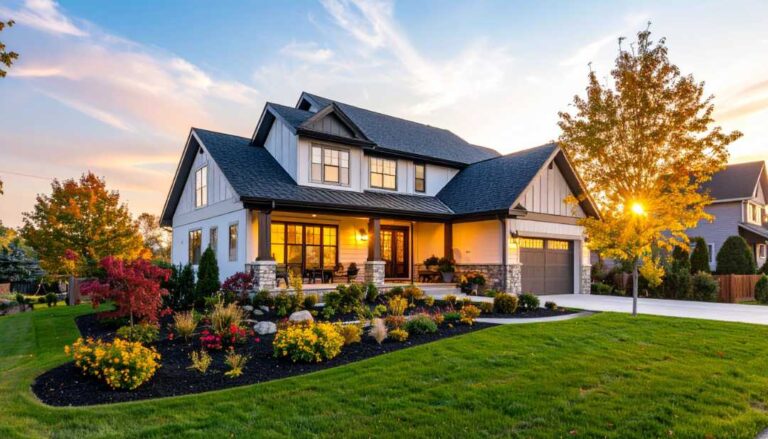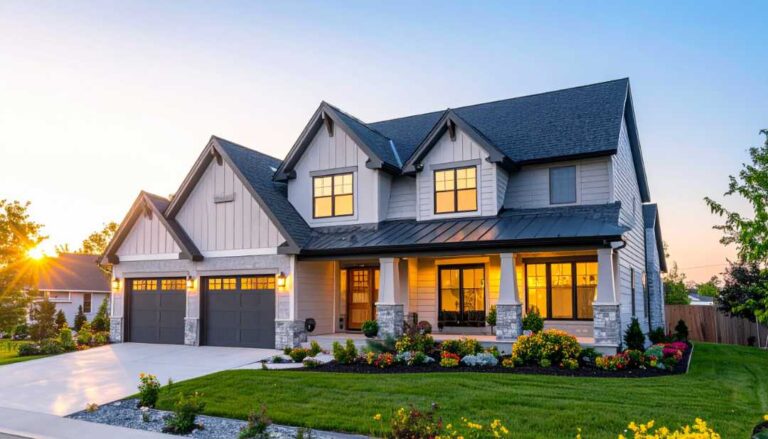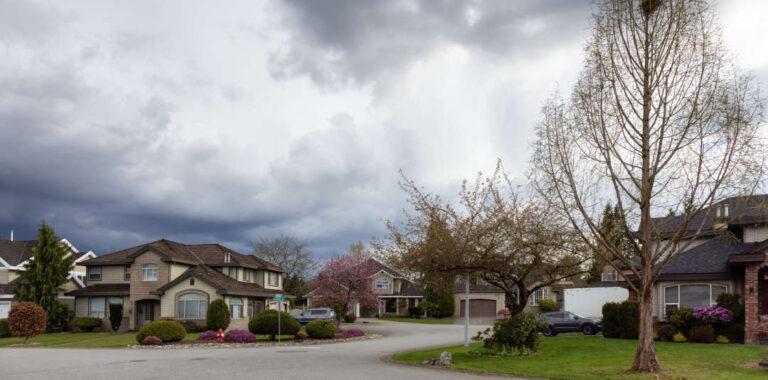Maximizing Your Roof Investment in Chicagoland’s Climate
For homeowners in Illinois, a new roof is one of the most significant investments you’ll make in your property. It’s not just about aesthetics; it’s about safeguarding your home and family from the region’s notoriously diverse and often extreme weather conditions. From scorching summer sun and high humidity to freezing winters with heavy snow and ice, not to mention the frequent bouts of severe thunderstorms with strong winds and hail, your roof endures a constant barrage.
When you’re considering a roof replacement, a fundamental question arises: “How long can I realistically expect a new asphalt shingle roof to last in Illinois?” The answer isn’t a simple number, as several critical factors influence its lifespan. Understanding these elements helps you evaluate the long-term value of your investment and plan for the future.
At Seidel Exterior Group, we’ve been expertly installing and maintaining roofs for Chicagoland homeowners since 1970. We believe in transparency and empowering our clients with knowledge. This article will delve into the realistic lifespan expectations for asphalt shingle roofs in Illinois, the factors that truly influence their longevity, and how choosing the right contractor can maximize your investment.
Asphalt Shingle Lifespan: The “Years” Are Just a Guide
Manufacturers often advertise asphalt shingles with 20-year, 25-year, 30-year, or even “Limited Lifetime” warranties. While these warranties offer valuable protection, it’s crucial to understand that the actual lifespan of your roof in Illinois can differ from these advertised numbers due to real-world conditions.
Generally, you can expect a new asphalt shingle roof in Illinois to last anywhere from 15 to 30 years, depending heavily on the type of shingle and the factors discussed below.
Types of Asphalt Shingles and Their General Lifespan in Illinois:
- 3-Tab Asphalt Shingles:
- Lifespan in Illinois: Typically 15-20 years.
- Characteristics: These are the most basic and economical shingles, characterized by their flat, single-layer appearance with three tabs. They are thinner and lighter.
- Performance in Illinois: While affordable, their lighter construction makes them more susceptible to wind uplift (often rated for lower wind speeds, like 60 mph) and hail damage. Our extreme temperature swings can also cause them to become brittle and crack more quickly, putting them at the lower end of the asphalt shingle lifespan spectrum in our climate.
- Architectural (Laminated/Dimensional) Asphalt Shingles:
- Lifespan in Illinois: Typically 20-30 years.
- Characteristics: These are thicker, multi-layered shingles designed to mimic the look of wood shakes or natural slate. They offer a more dimensional appearance and are generally heavier.
- Performance in Illinois: Their added thickness and stronger adhesive strips provide significantly better resistance to wind uplift (often rated for 110-130+ mph) and hail impact (many carry Class 3 or Class 4 impact resistance ratings). This enhanced durability means they stand up much better to Chicagoland’s severe storms and temperature fluctuations, providing a longer service life.
- Premium/Designer Asphalt Shingles:
- Lifespan in Illinois: Can extend to 30-40 years (or even beyond, depending on specific product and conditions).
- Characteristics: These are typically very thick, heavy, and offer unique aesthetic profiles mimicking natural slate, cedar, or tile. They are engineered for maximum performance.
- Performance in Illinois: Often feature advanced technologies for superior UV resistance, extreme impact resistance (Class 4 is common), and enhanced wind uplift ratings. They represent the peak of asphalt shingle technology and are designed for maximum longevity in challenging climates.
Key Factors That Actually Determine Your Roof’s Lifespan in Illinois
While shingle type is crucial, it’s only one piece of the puzzle. The true longevity of your asphalt roof in Chicagoland is a dynamic interplay of several critical factors:
- The Illinois Climate and Weather Extremes: This is arguably the most significant factor.
- Temperature Fluctuations: The rapid and extreme shifts from freezing cold to scorching heat (and vice versa) cause roofing materials to constantly expand and contract. This “thermal shock” creates stress on the shingles, leading to cracking, curling, and granular loss over time.
- UV Radiation: Even in winter, the sun’s ultraviolet (UV) rays relentlessly degrade the asphalt and cause granules to shed. The more intense the UV exposure, the faster the degradation.
- Precipitation: Heavy rain, ice storms, and significant snowfall put constant stress on the roof. Standing water (due to poor drainage) can accelerate deterioration, and the freeze-thaw cycle of melting snow and refreezing ice can cause water to seep under shingles.
- Wind: Chicagoland is known for its strong winds. Repeated wind gusts can lift and tear at shingles, weakening their seals and potentially causing widespread blow-offs over time.
- Hail: A frequent visitor. Hail impacts can dislodge granules, bruise the shingle mat, and create micro-fractures, significantly shortening the life of even new shingles if not addressed.
- Humidity: High humidity levels can contribute to moisture retention on the roof surface and in the attic, potentially leading to algae/moss growth and accelerated deterioration.
- Quality of Installation: Even the most expensive, durable shingles will fail prematurely if not installed correctly.
- Expert Workmanship: Proper nailing patterns, correct shingle alignment, meticulous flashing around penetrations (chimneys, vents, skylights), and proper underlayment installation are paramount.
- Adherence to Manufacturer Specifications: A reputable contractor will strictly follow the shingle manufacturer’s installation guidelines, which is often a requirement for warranty validity.
- Season of Installation: Installing asphalt shingles in very cold weather can make them brittle and prone to cracking, potentially compromising their initial seal.
- Local Building Codes: Professional installation ensures compliance with all local Chicagoland building codes, guaranteeing a safe and durable roof.
- Attic Ventilation: The unseen hero.
- Heat Management: Proper attic ventilation allows hot, stale air to escape in the summer, preventing shingles from “cooking” from below and extending their lifespan.
- Moisture Control: In winter, it removes moisture buildup (from household activities and outside humidity) from the attic, preventing condensation, mold growth, wood rot, and, crucially, ice dam formation. Inadequate ventilation is a leading cause of premature roof failure and interior water damage in Illinois.
- Regular Maintenance and Inspections:
- Gutter Cleaning: Clogged gutters cause water to back up onto the roof and fascia, leading to rot and premature shingle wear. Regular cleaning is essential.
- Debris Removal: Keeping your roof free of leaves, branches, and other debris prevents moisture retention and algae/moss growth.
- Proactive Repairs: Addressing minor issues (e.g., a few loose shingles, small granule loss) immediately prevents them from escalating into major problems.
- Professional Inspections: Annual or bi-annual professional roof inspections, especially after severe storms, can identify subtle damage (like hail bruising or weakened seals) that’s not visible from the ground, allowing for timely repairs or insurance claims.
- Roof Slope (Pitch) and Design:
- Steeper roofs tend to shed water and snow more effectively, reducing exposure time for shingles. Low-slope roofs are more prone to water pooling.
- Complex roof designs with many valleys, dormers, and penetrations can be more susceptible to leaks if not meticulously installed.
- Tree Coverage:
- Overhanging branches can cause abrasion, drop debris that traps moisture, and lead to damage from falling limbs during storms. Regular trimming helps.
- However, some shade can reduce UV exposure, which is beneficial. It’s a balance.
Recognizing the Signs It’s Time for a New Asphalt Roof in Illinois
Even with the best materials and maintenance, every roof has a finite life. Beyond the age timeline, watch for these clear indicators that your asphalt shingle roof in Chicagoland may need replacement:
- Significant Granule Loss: Large amounts of gritty, sand-like particles in your gutters or at the bottom of your downspouts, or visible bald spots on your shingles. This means your UV protection is gone.
- Curling, Cupping, or Clawing Shingles: Shingle edges curling upwards, or tabs cupping (edges turn down, middle buckles up), indicate drying, brittleness, and nearing the end of life.
- Cracked Shingles: Random cracking across shingles, especially “spiderweb” cracks, signals aging and vulnerability to leaks.
- Missing Shingles: Obvious gaps on your roof, especially after windstorms. While sometimes repairable, widespread missing shingles usually point to a compromised roof.
- Water Stains or Leaks Inside: Any new water stains on your ceilings or walls, or dripping water in your attic, are critical alarms.
- Sagging Roof Deck: A visible sag or dip in your roofline indicates potential structural issues with the decking or rafters, often due to long-term moisture exposure.
- High Energy Bills: An older, failing roof can significantly contribute to heat loss in winter and heat gain in summer.
- Neighbors Getting New Roofs: If homes built around the same time as yours are getting new roofs (especially after a storm), it’s a good sign yours might be due for replacement too.
- Moss or Algae Growth: While some algae are cosmetic, widespread moss can trap moisture and degrade shingles.
Maximizing Your Investment with Seidel Exterior Group
Understanding the expected lifespan of your asphalt shingle roof empowers you to make informed decisions. When it’s time for replacement, choosing the right contractor is as important as choosing the right materials.
At Seidel Exterior Group, we are committed to maximizing the lifespan and performance of your new roof investment:
- Quality Materials: We partner with leading manufacturers (GAF, Owens Corning, Atlas) to provide architectural and premium asphalt shingles known for their durability and strong warranties.
- Expert Installation: Our certified crews are rigorously trained in the latest installation techniques, ensuring every shingle is applied precisely to withstand Illinois’s challenging climate.
- Comprehensive Systems: We don’t just replace shingles; we assess and optimize your entire roofing system, including crucial attic ventilation and proper underlayment.
- Transparent Communication: We explain every step of the process, including factors affecting longevity and how to maintain your new roof.
- Insurance Claim Assistance: If your replacement is due to storm damage, we have extensive experience working with insurance companies to ensure a smooth and fair claim process.
Plan for Longevity, Protect Your Chicagoland Home
A new asphalt shingle roof is a long-term investment, and understanding its realistic lifespan in the Illinois climate is key to smart homeownership. While 3-tab shingles offer a shorter lifespan, modern architectural and premium options can provide 20-40 years of robust protection, especially when installed correctly and properly maintained.
Don’t wait for your roof to fail before you act. By understanding the factors that influence longevity and by partnering with a reputable, experienced Chicagoland contractor like Seidel Exterior Group, you can ensure your new asphalt shingle roof provides maximum protection, energy efficiency, and peace of mind for decades to come.
Is your asphalt shingle roof nearing its expected lifespan, or are you seeing signs of wear? Contact Seidel Exterior Group today for a free, comprehensive roof inspection. Let us help you evaluate your roof’s health and plan for a future-proof investment in your Chicagoland home.



